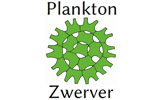Prasiolopsis Vischer, 1953
Holotype species: Prasiolopsis ramosa Vischer
Publication details: Vischer, 1953: 184
Original publication and holotype designation: Vischer, W. (1953). Über primitivste Landpflanzen. Berichte der Schweizerischen Botanischen Gesellschaft 63: 169-193, 13 figures.
Description: Thallus juvenilis ramosus, filiformis, substrato Leptosirae modo adpressus est; cellulae apicales cylindricae, 15–25 µ longae, 7–9 µ latae; cellulae filamenlorum partitionibus subsequentibus breviores, deinde isodiametricae. Chlorophorus unicus, centralis, stellatus vel lobatus, pyrenoideo centrali, amylo obtecto instructus. Filamentorum adultorum cellulae partitionibus repetitis ramulos parenchymatosos, incrassatos, partim erectos partim in substrato crescentes formant. Deinde unaquaque cellula plantarum veterum in aplanosporangium vel aplanosporam mutantur, plantulae in glomerulos pulverulentos dissolvuntur. Plantulae adultae 1—2 mm latae et altae. Cfr. picturas: R. Chodat, 1909, tab. II. [The juvenile thallus is branched, filiform, just pressed to the Leptosirae substrate; the apical cells are cylindrical, 15–25 µ long, 7–9 µ wide; the filament cells are shorter by subsequent partitions, then isodiametric. The chlorophorus is single, central, stellate or lobed, equipped with a central pyrenoid, covered with starch. The adult filament cells form parenchymatous, thickened branches by repeated partitions, partly erect and partly growing on the substrate. Then each cell of the older plants changes into an aplanosporangium or aplanosporum, the plantlets dissolve into powdery glomeruli. The adult plantlets are 1–2 mm wide and high. See pictures: R. Chodat, 1909, tab. II.]
Information contributed by: Original description.. The most recent alteration to this page was made on 2025-03-04 by M.D. Guiry.
Taxonomic status: This name is of an entity that is currently accepted taxonomically.
Most recent taxonomic treatment adopted: Sluiman, H.J., Guihal, C. & Mudimu, O. (2008). Assessing phylogenetic affinities and species delimitations in Klebsormidiales (Streptophyta): nuclear-encoded rDNA phylogenies and ITS secondary structure models in Klebsormidium, Hormidiella, and Entransia. Journal of Phycology 44(1): 183-195.
Comments: Prasiolopsis known only from Europe, subaerial in humid conditions on rocks or trunks of trees; also found with Prasiola and Rosenvingiella in more exposed coastal conditions. A report from India requires further study.
Verification of Data
Users are responsible for verifying the accuracy of information before use, as noted on the website Content page.
Contributors
Some of the descriptions included in AlgaeBase were originally from the unpublished Encyclopedia of Algal Genera,
organised in the 1990s by Dr Bruce Parker on behalf of the Phycological Society of America (PSA)
and intended to be published in CD format.
These AlgaeBase descriptions are now being continually updated, and each current contributor is identified above.
The PSA and AlgaeBase warmly acknowledge the generosity of all past and present contributors and particularly the work of Dr Parker.
Descriptions of chrysophyte genera were subsequently published in J. Kristiansen & H.R. Preisig (eds.). 2001. Encyclopedia of Chrysophyte Genera. Bibliotheca Phycologica 110: 1-260.
Linking to this page: https://www.algaebase.org/search/genus/detail/?genus_id=42983
Citing AlgaeBase
Cite this record as:
M.D. Guiry in Guiry, M.D. & Guiry, G.M. 04 March 2025. AlgaeBase. World-wide electronic publication, National University of Ireland, Galway. https://www.algaebase.org; searched on 02 April 2025
 Request PDF
Request PDF














